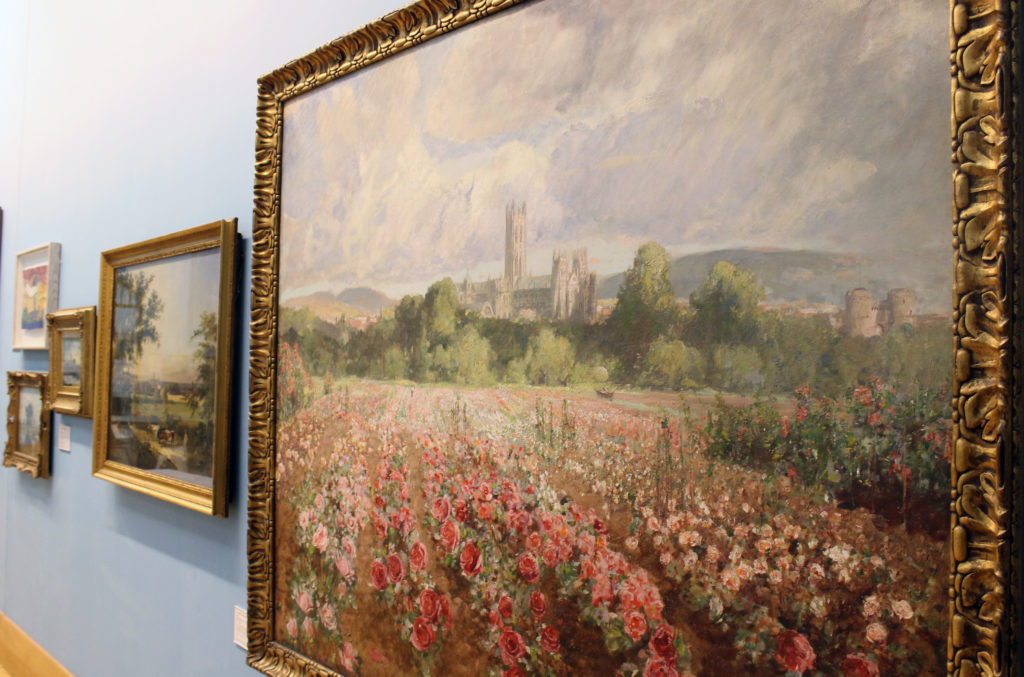
Easter fun at the museums!
Exhibitions, trails and activities; six fun things for all the family to enjoy at The Beaney and...
For my second visit I am met with sounds and sweet airs that give delight: something chicken based is on the stove and the aroma of a particularly delightful coffee sensation tries its best to tempt me over to the dark side (but as you already know I’ll always be a tea drinker).
I find myself looking at the Cabinet of Curiosities, and my reflection staring back at me. The cabinet contains animals and other objects collected from the late eighteenth century onwards such as a duck-billed platypus and a two headed shark specimen. There’s a photo of what the old Canterbury Museum looked like. The photo is reassuringly ghostly. It fills me with nostalgia for a time I know only through text, post cards, and celluloid. The reflections that the glass casts of people walking by and glancing form fascinating brief encounters with the then and now. As time collapses, I drift away…
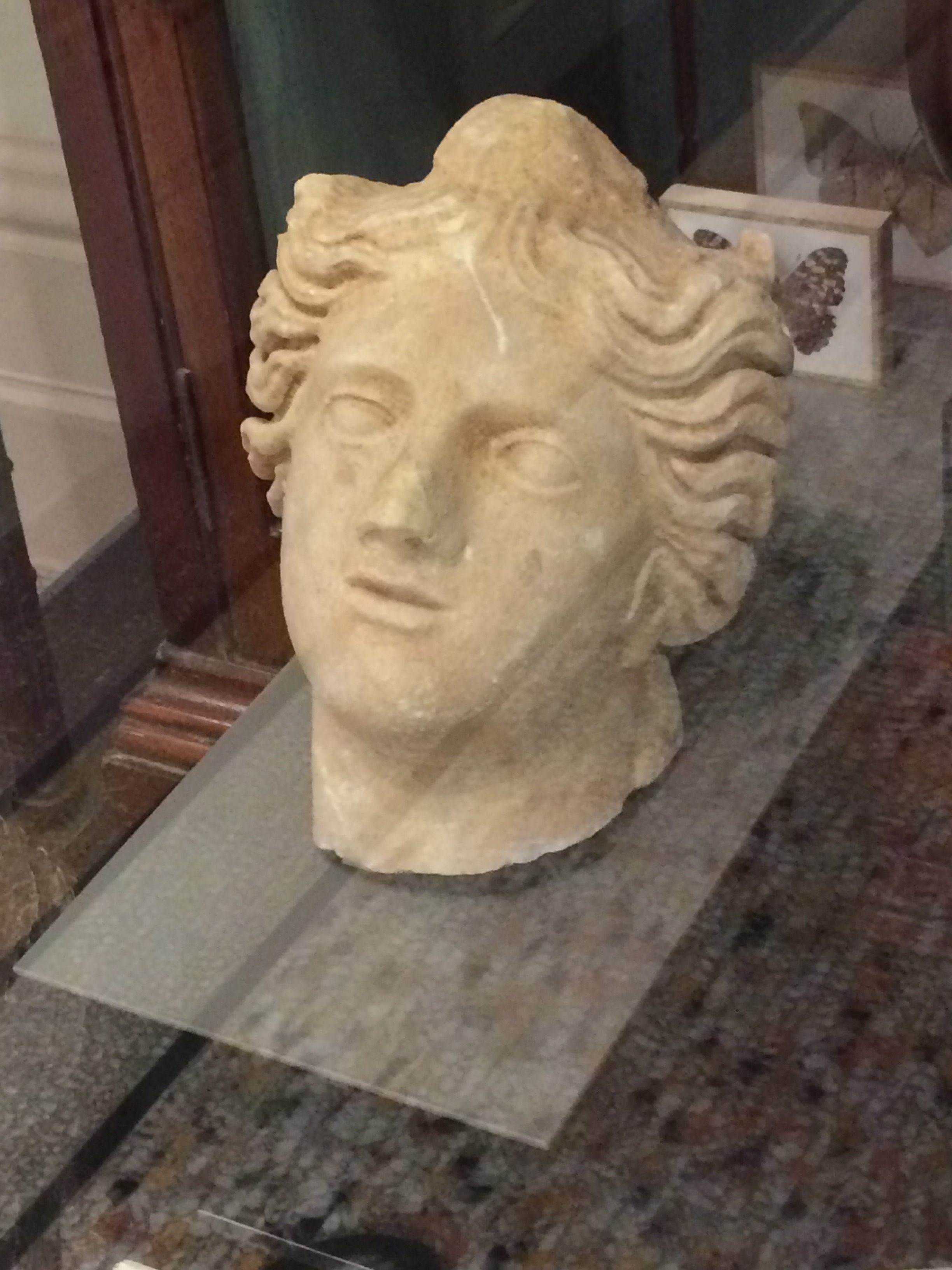
I am drawn to a dismembered (marble) head staring up at me waiting for an answer to an obvious question: have you seen my body? I imagine the chicken I mentioned earlier is being prepared for a sumptuous feast straight out of antiquity (with maybe a side order of chees and onion crisps). The head whispers in my ear: ‘you should have seen the other guy’.
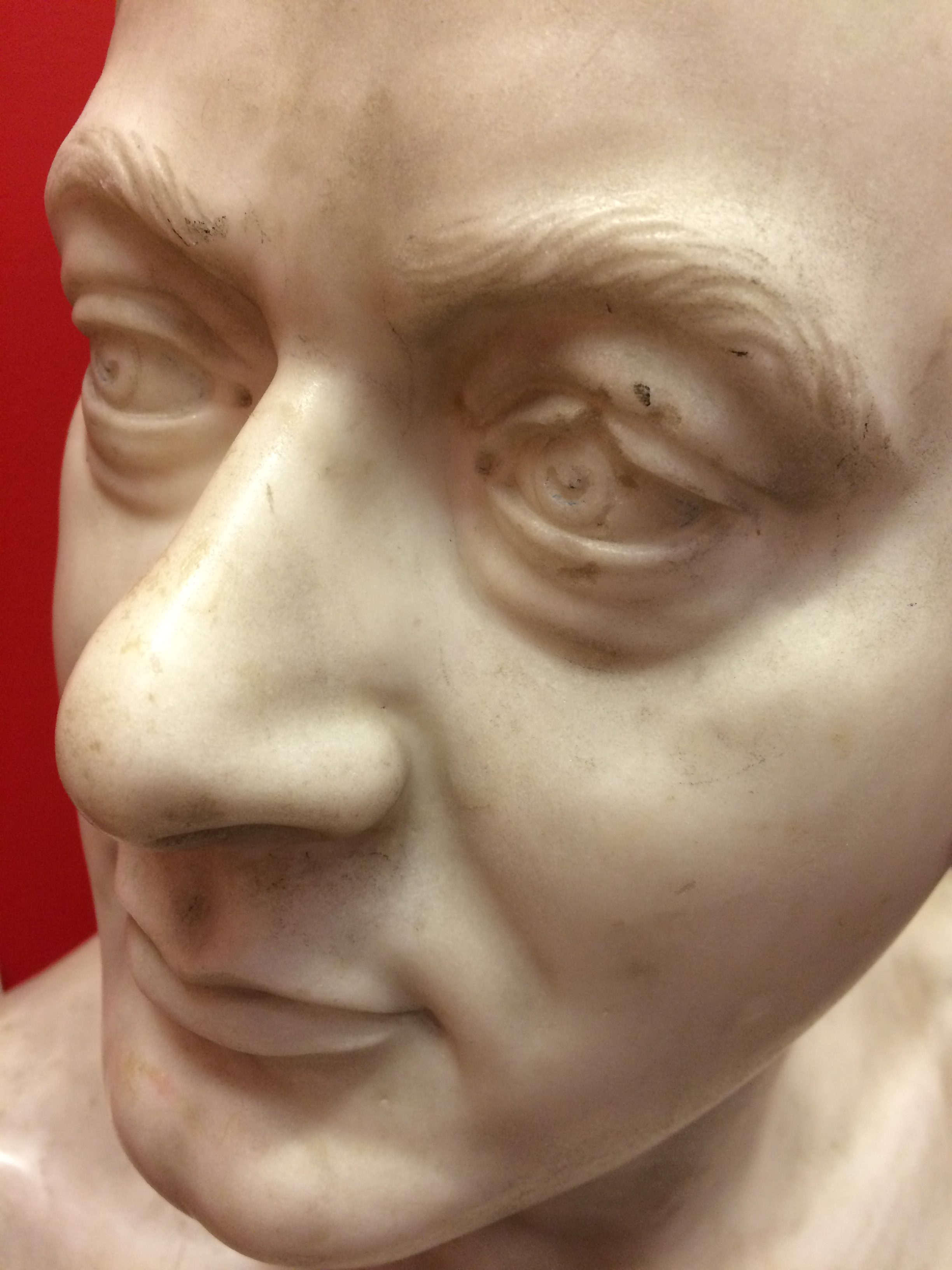
The Unidentified Man is attributed to Henry Weekes, RA, a Canterbury born Sculptor and dates from about 1830. This bust is one of three in the Materials and Masters room. The other two are of horticulturalist and Mayor of Canterbury William Masters, and an Unidentified Head, probably ancient Greek, found at Magnessa and Maeundrum, Asia Minor.
These three heads sit in close proximity, two watching each other as the third looks on elsewhere, out, looking for hope, a name, a place to rest. They dance across the mind’s eye like ships in the night. I wonder what they talk about when the lights go out? What have they seen across all those years? And what might they take with them on their continuing journey? Who became the Unidentified Man and Unidentified Head? I rather like the fact we don’t know. Their information labels give licence to dream, to imagine all sorts of people they might have been, who they remind us of, who they might yet become. They remind me collectively of a scene from Dr Who in which Peter Davison talks to three Time-lord marble heads who warn him of his impending doom, or the watcher who helps Tom Baker’s Doctor’s transition into Peter Davison’s.
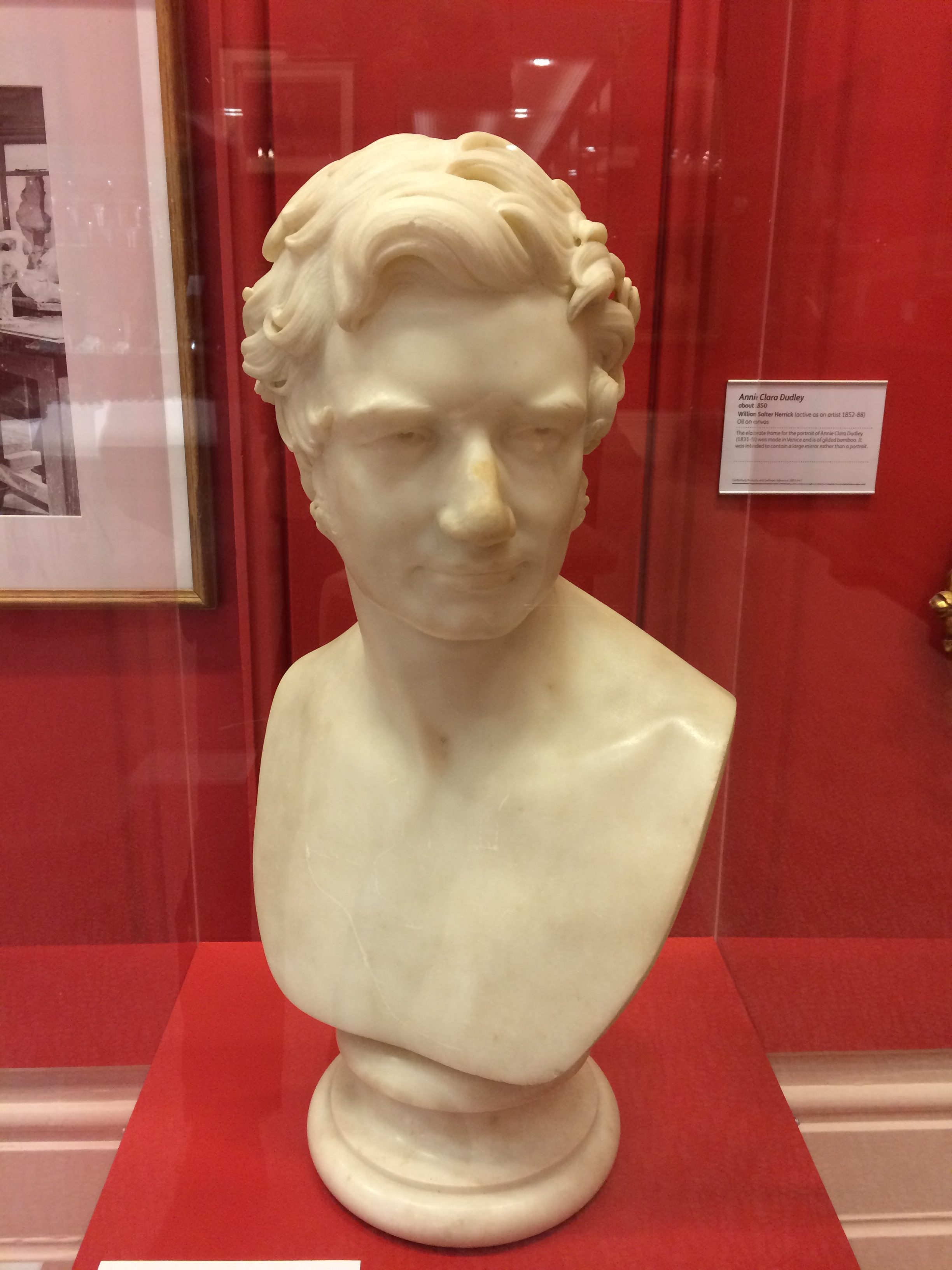
They are skilfully sculpted, gentle and suggestive, ghosts of a legacy. Unidentified, without a name, or an everyman with all of our names? They connect me to a very human trait: the desire to leave a mark, to live on in some way. But I wonder what the subjects (or sitters) would have thought if they knew we had lost their names?
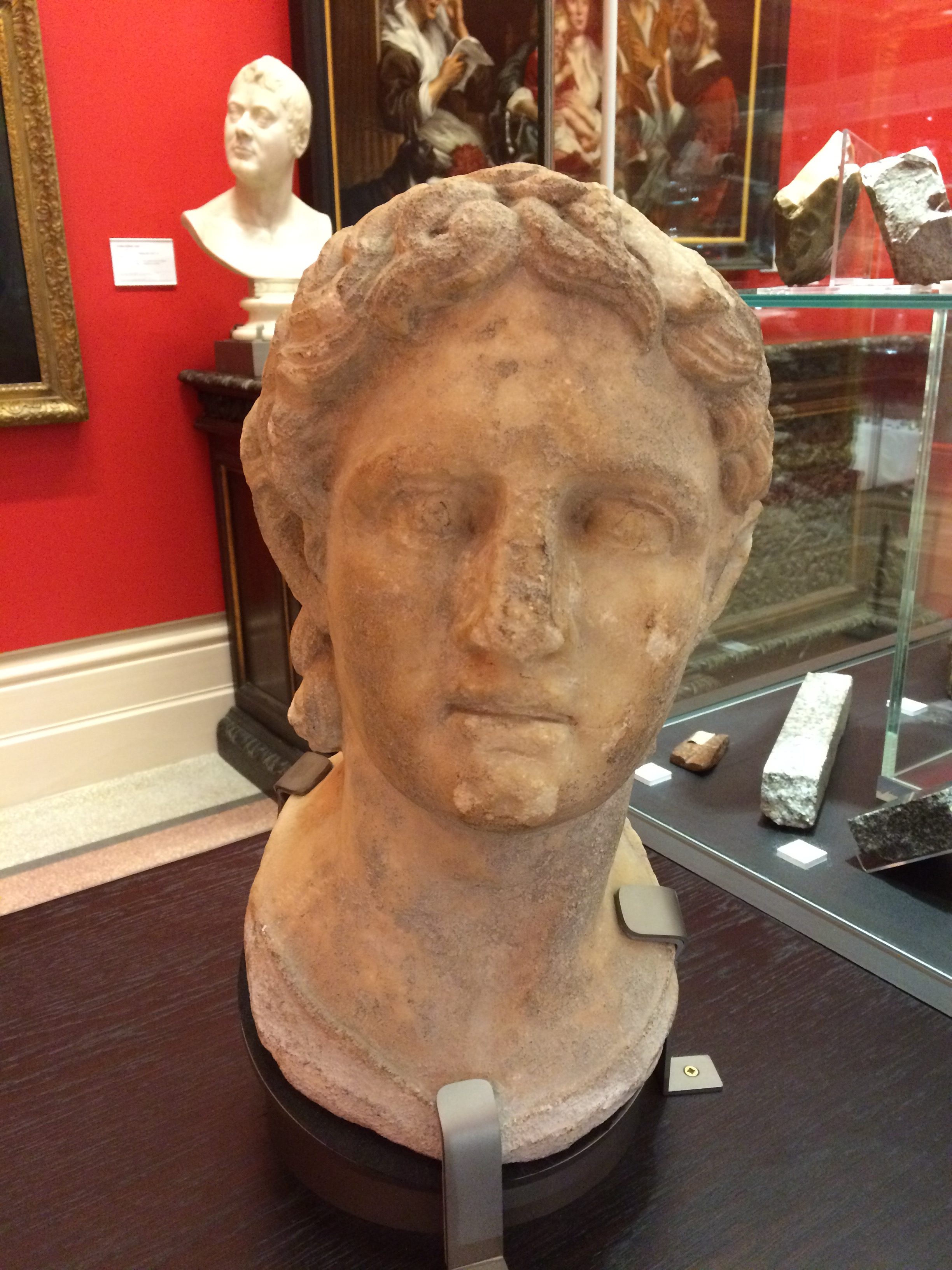
You can’t help but make these characters personal, and find yourself caught between history and the immediate moment. I think it’s important they live in that space, it’s a key to sustaining them as artefacts of culture, theirs reflected in ours and ours in theirs. When they meet our eye it’s like holding up a mirror to ourselves. Each face holds a multitude of adventures. Because they are artefacts of the human image, they are particularly potent talismans of the imagination.
As the Armchair Artist in Residence, I am looking for ways of sharing my responses to the artefacts, so here’s a sketch, an interpretation from a ten minute sitting of the Unidentified Man. Of course there will have been lots of drawings, photos, videos over the years. Here’s mine anyway:
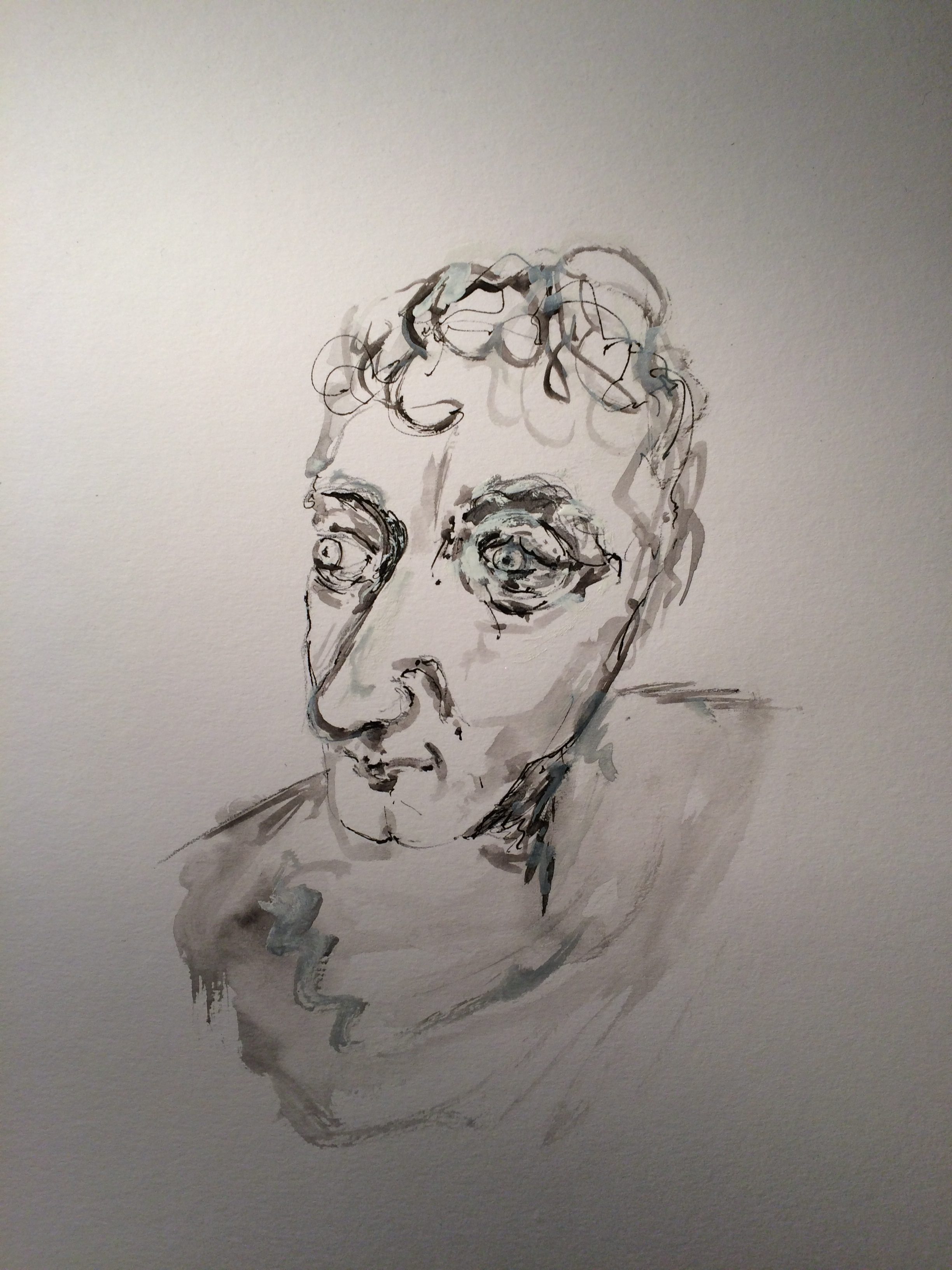
My work also includes creating live installations and since these heads already have a stage set for free association and imagining, I thought I’d include an image which I’m sure you’ll agree provides a good opportunity to do just that (they do get around these heads):
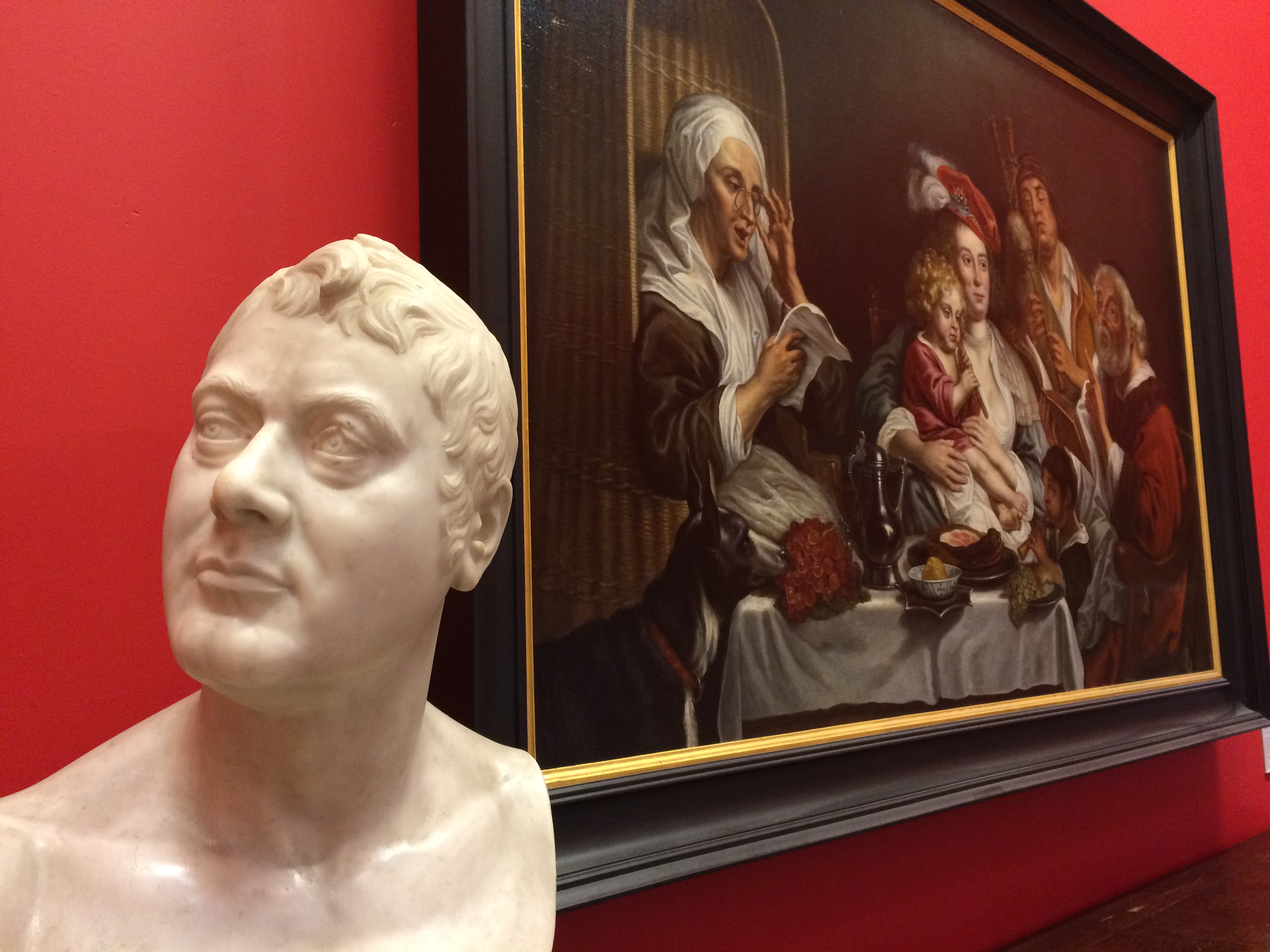
All the artefacts seem to traverse history because the story of their origins goes hand in hand with their yearning to live in our imaginations, our daydreaming.
What the historian E H Carr has to say about history:
History to a certain degree is relative, and subjective, (because) the historian uses the facts he or she decides to make use of e.g. millions crossed the Rubicon but only Julius Caesar’s crossing in 49 BC is declared noteworthy. History is an unending dialogue between the past and the present. Historians, when writing about the past, are influenced by the present. History is preoccupied with fundamental processes of change.
The Unidentified Man’s head is cold to touch, and changes with the light. Over time it has shifted to the vibrations of sound, albeit on a subatomic level, with partials in the air breaking it down ever so slowly. It carries with it something of what we leave behind in air. It’s a living archive of our comings and goings. And if you look carefully, you might see that smile rise ever so slightly in a comforting, knowing, almost smug way…
I imagine the world of the artist as he chipped away at his then Named Man in relation to my own. Our cultures have changed and in many ways so has his beautiful sculpture. Whatever the reason for his subject’s loss of identity, whoever he was, doesn’t really matter to me, but the work does, and the idea of the work, and the possibilities of its continuing journey.
The artefacts or talismans I have encountered so far are relevant because of our changing culture, because we can imagine. Their origins remain and yet they carry with them ever evolving stories, meanings, feelings, functions. As the current Armchair Artist in Residence I am exploring the Beaney’s collection of artefacts as Talismans of the Imagination: how they make me feel, what associations and memories they trigger, related or unrelated, and how they are significant because of their origins, ‘and’ how they live in our imagination. I am becoming more and more interested in the possibility sustaining these artefacts by sharing different responses to them. This blog is of course one such way, but maybe I can add to the museum’s theatre of narratives in some other way too… we shall see where my journey takes me.
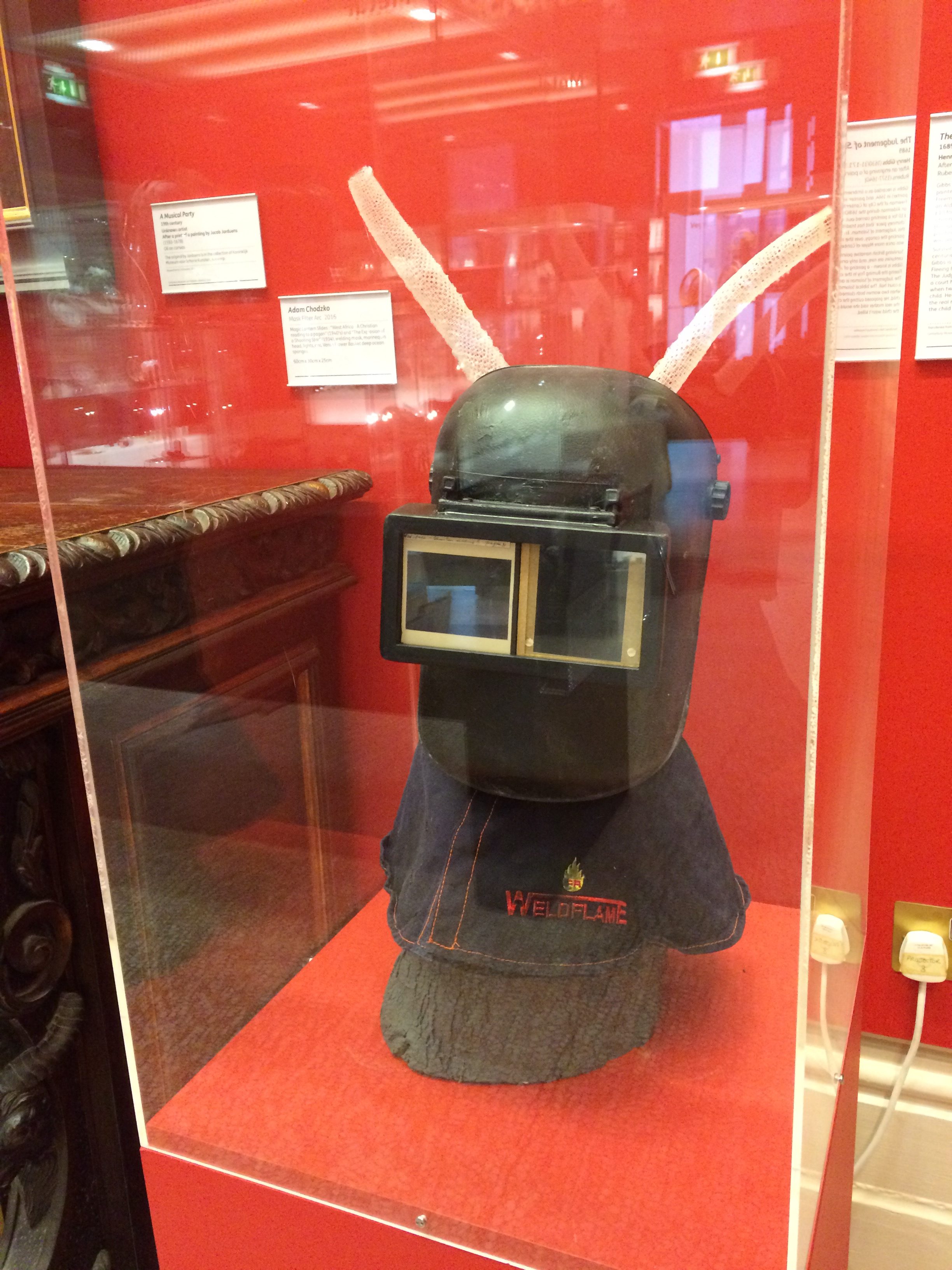
I heard an interview with the musician Bran Eno the other day where he talked about his work in generative music, which involves writing a code for a music track and letting that code grow, rather like planting a seed. Although he wouldn’t always be that piece of music’s composer in the traditional sense, he would always be a part of it, having given it a chance to breath, to grow. Maybe that’s how an artefact’s life begins? And maybe that’s a very interesting code for a living museum?
Then again you might just pass it all by, and that’s ok. I’m off for a cup of tea and a Jammy Dodger.
